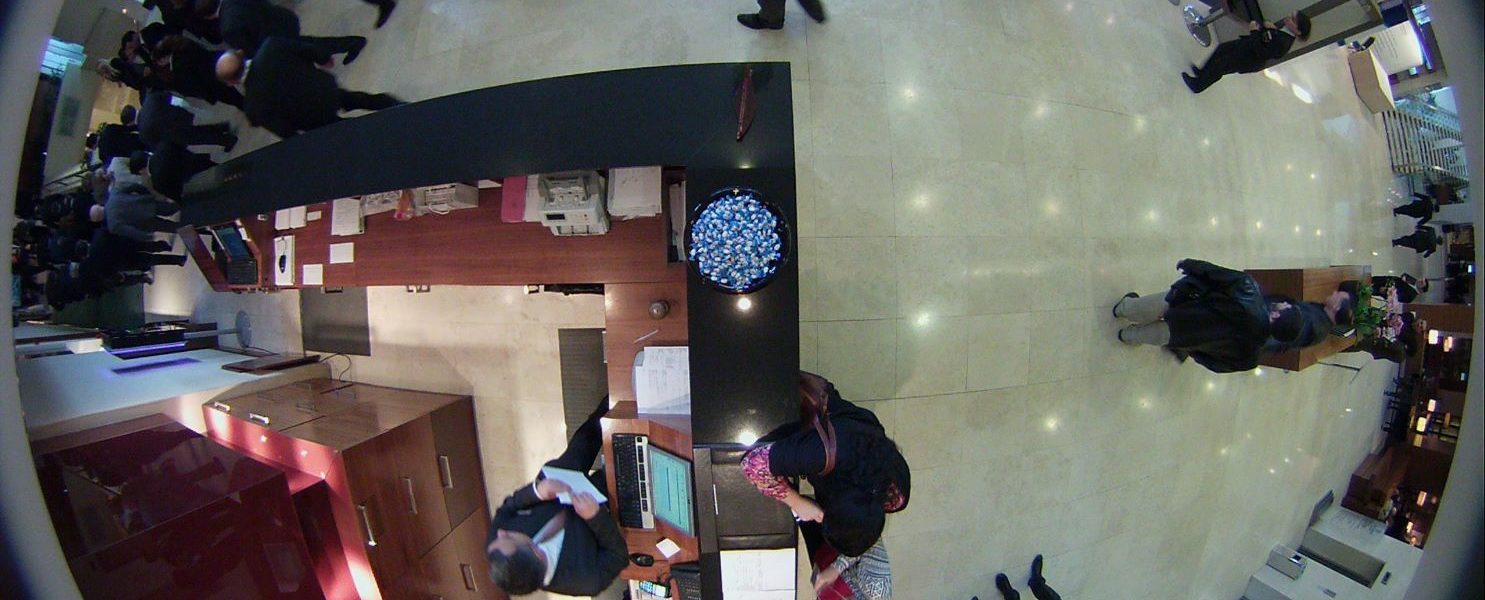By Jon Marsh
When you think about the wide-open spaces that today’s modern churches and worship centers embody, you may not immediately realize the security elements that must be in place to protect the congregation. Securing entrances and exits helps with controlling access, but video surveillance technology can go a long way in providing real-time and forensic data to address potential issues or supplement investigations.
Traditional vs. Panoramic Cameras
Traditional pan-tilt-zoom (PTZ) cameras capture a narrow field of view and require moving parts to scan the entire area, so these cameras are far more subject to mechanical failures. PTZ cameras also only record what they see in their field of view and may easily miss a critical event if the camera was facing in the wrong direction. They also lack zoom functions within the recorded images, which can negatively affect the level of situational awareness that is crucial to security personnel, as evidenced in emergency situations and official investigations.
On the other hand, panoramic cameras — or more specifically “fisheye” cameras — use a fisheye lens to record the entire scene and events, allowing for a complete 360-degree picture to be captured with no blind spots. Since the footage is shot with a fisheye lens, it is then dewarped in real time, allowing those viewing the incoming video to pan, tilt and zoom through the entire scene. If something happens, the operator can follow the action or subject before, during and after the event as the dewarping can also be done retrospectively on past recorded images.
Cost Savings
Since one device covers such a large area, the use of panoramic technology reduces the number of camera installations necessary to secure applications, making it the ideal option for expansive auditorium-style worship centers or churches with high ceilings. As a result of fewer installed cameras, churches and worship centers see significant upfront installation and camera cost reductions. Fewer cameras also means fewer licenses for video management software, which can greatly decrease the investment as well.
With panoramic cameras including both 360- and 180-degree technology, there are a number of ways they can be used across a facility. In long hallways where Sunday school or meeting rooms and offices are located, 180-degree cameras can be affixed to watch traffic from end to end. Typically, in a long hallway, numerous traditional cameras are needed to collect video from both directions, but panoramic technology makes this an easier and more cost-effective endeavor.
Increased Connectivity
Today’s religious organizations, whether they’re rooted in tradition or are embracing more progressive practices, are seeing a rise in demand for innovative technology and increasing connectivity. This may be realized in the audiovisual technology being used, such as streaming and video, but can also be found in the security technology deployed to keep attendees safe from outside threats.
Intelligent video technology that connects via a network offers these organizations a number of benefits, including the ability to:
- Access and store video either on-site or in the cloud.
- Remotely monitor a facility via an app on a smartphone or tablet.
- Deploy video management software that has built-in analytics to help communicate information about traffic patterns within a facility (as well as other analytics metrics, such as heat mapping and people counting).
- Integrate with access control software and readers to determine building occupancy and help control heating and cooling, making a facility more efficient.
All of this can be done by using intelligent technology that serves multiple purposes for an organization, whether it’s related to energy efficiency, cost savings or determining building usage in an effort to add space or downsize. Whatever the reason, the more data that is collected, the more information that can be gleaned to help an organization — and all of it starts with connectivity.
Panoramic cameras are improving daily, and the future of the video technology promises even greater capabilities as more software is developed to integrate with this technology.
As this video technology develops and becomes less expensive to manufacture, it will become imperative to divest from outdated systems, such as analog cameras, in favor of IP-enabled solutions that can effectively multitask and improve business operations and security efforts in a number of ways.
Jon Marsh is vice president of product for Oncam, leading provider of 360-degree and wide-angle video capture technology, www.oncamgrandeye.com.





